Since the release of my latest book, Real Food for Fertility — co-authored with Lisa Hendrickson-Jack — I’ve gotten quite a few questions about how this project came about and what the researching and writing process looked like.
Before I get into that, I have to say… We’ve been absolutely blown away at the response.
With your help, we were not only able to rank as the #1 bestseller in multiple categories — including fertility, women’s health, diet therapy, and more — but we were able to rank #19 out of all books across ALL of Amazon on launch day.
This is just beyond my comprehension.
Can you imagine if fertility doctors and OBGYNs start recommending that their clients think about their nutrition and lifestyle before conception or before seeking expensive fertility treatments?
As Dr. Aviva Romm so succinctly explains in the foreword of Real Food for Fertility:
“This book isn’t just packed with info; it’s a clear roadmap to taking control of your fertility. Now, why am I so pumped about Real Food for Fertility? Because it’s breaking the mold. It’s challenging old-school thinking and bringing real food and fertility awareness into the conversation. Lily and Lisa aren’t here to add to the noise; they’re here to change the game.”
Behind the scenes of Real Food for Fertility
Given all the questions we’ve received about Real Food for Fertility, Lisa and I sat down on her podcast, Fertility Friday, to record a special tell-all episode and pull back the curtain on how this book came to life.
From how we met, to our history as “book buddies,” to specifics on structuring the researching and writing process, we go into it all.
Specifically, we cover the following topics in this interview:
- What inspired us to write the book Real Food For Fertility in the first place and what the book is all about
- Some background on my earlier books and why the fertility one needed to be written
- How we met and became friends; and how we ended up as “book buddies” while we wrote some of our earlier books (yes, we have a long history prior to this co-authorship!)
- Behind the scenes on the research process of the book and what went into the process of vetting and citing thousands of studies
- How we structured the book and picked which topics to include
So join us in exploring the behind the scenes of Real Food For Fertility and how this collaboration came to life.
Listen here or search your favorite podcast player for “Fertility Friday, episode 508.”
We poured 3 years of our lives into this book and we know how many couples and healthcare providers desperately need this info!
One topic we didn’t get into on the interview was the story behind the cover of Real Food for Fertility, but many of you have been asking about it.
The story behind the cover of Real Food for Fertility
You may not know this, but I have designed all of my own book covers (including my e-cookbook). Way back when I was deciding what to study in university, it was a decision between nutrition and art. Ultimately, I majored in nutrition and did a minor in art, just to keep the right side of my brain happy and give it a rest from all the chemistry!
So back to the book covers… For my first book, Real Food for Gestational Diabetes, I photographed and designed the whole thing on my own. Yes, I cooked those eggs, I grew the cherry tomatoes, and I prayed for a perfect avocado that morning. I go into the backstory on this a bit in my first interview on Robb Wolf’s Paleo Solution Podcast, circa 2015. You’ll really have to dig through the archives for that episode.
For Real Food for Pregnancy, I had a clear vision of what I wanted and asked my friend, Jessica Beacom (of The Real Food Dietitians) to use her amazing photography skills to bring it to life, then I did the rest of the design. At the time, my son was under 2 years old, so trying to arrange raw food and get a decent photograph — without little hands getting in the way — was off the table, haha!
For Real Food for Fertility, I felt a photographed cover would be tricky. I wanted to make sure it wasn’t too similar to my other books, but similar enough that you could see they were related. Lisa and I toyed with a number of concepts, though many of the classic representations of fertility are overused or cheesy (think sperm fertilizing an egg).
I had seen beautiful paintings of embryos, which I liked better. I even hired out some embryo paintings from a few artists, but they weren’t quite what I was looking for. I really wanted to show the movement of an embryo as a hatching blastocyst. So, I decided to paint the embryo myself. What you see on the cover is that embryo, painted at my kitchen counter on one very snowy January day.
(Some have speculated that this was MY embryo. It is not. This is a painting of an embryo image from a scientific journal; I have never undergone any assisted reproductive technology, so I have no idea what my embryos looked like! That would have been an even cooler story though!)
But a cover with JUST an embryo felt empty, especially compared to my other book covers. I still wanted to highlight some foods on the cover, but needed to find a way to do it without recreating the Real Food for Pregnancy cover. So, we settled on the concept of using watercolor paintings of food around the edges. I may be able to paint, but I’m not particularly skilled at realistic watercolor, nor do I have the time to paint as many as I envisioned on the cover.
I scoured the internet for watercolor food artists, eventually ending up with a search on Instagram, which is where I found Avantika (@artbyavantika). She’s an amazing watercolor artist and we commissioned each and every food you see on the front and back covers from her. As you can see, she’s incredibly skilled! I then compiled each of those paintings onto the cover.
I’d love to know which of the images on the cover is your favorite (drop it into the comments at the bottom of this post!).
Why Does Preconception Nutrition Matter?
Let’s talk a little more about the book itself and why preconception nutrition matters for you, your partner, and your future baby. In short, preconception nutrition helps with the following:
- Supports optimal egg and sperm health
- Regulates the menstrual cycle and supports hormonal balance
- Supports healthy cervical mucus production (key for the survival of sperm on its journey to fertilize the egg)
- Ensures ample endometrial development (for the early embryo to securely implant)
- Promotes the formation of a functional placenta with robust vasculature to transfer nutrients from mother to baby (this is a delicate dance reliant upon a healthy egg, healthy sperm, a healthy endometrium, and a healthy mother)
- May reduce the risk of certain pregnancy complications by better supporting the body’s physiological adaptation to the stresses of pregnancy
- Buffers nutrient losses during pregnancy and mitigates the often lower nutrient intake in early pregnancy (due to nausea and food aversions)
- Lowers the risk of nutrient depletion postpartum
If that isn’t reason enough, consider this: Improving nutrient intake before you get pregnant has an even greater impact on pregnancy outcomes than solely changing what you eat during pregnancy.
While I’m all in favor of a healthier diet during pregnancy (and you’re never too late to benefit!), starting in advance of pregnancy has advantages!
What topics do you cover in Real Food for Fertility?
A lot of people have been asking what topics are covered in Real Food for Fertility and whether the content is substantially different from my other books. While there are some universal truths about nutrition that certainly overlap between preconception and pregnancy (meaning similar nutrient-dense foods are beneficial regardless of which life stage you’re in), the majority of the book is information I have never written about elsewhere.
Plus, information that does overlap a bit has completely different substantiating literature and data points. For example, the sections covering macronutrients include studies specific to egg and sperm quality, conception rates, ovulatory issues, and fertility challenges. You follow?
This is a short list of the topics covered in Real Food for Fertility:
- How your nutrient intake and lifestyle choices affect your menstrual cycles, hormone balance, risk for fertility challenges, and more
- Why common fertility nutrition advice is often ineffective — and sometimes detrimental to overall fertility
- What both ancestral practices and modern research suggests is optimal for female and male fertility when it comes to macronutrients, micronutrients, meal timing/spacing, and much more
- Specific recommendations for nutrient-dense foods to emphasize as well as foods/ingredients to avoid to support both female and male fertility
- Examination of popular diets and their effects on fertility, including the Mediterranean diet and vegetarian or vegan diets
- How to use your menstrual cycle as a vital sign and apply fertility awareness to improve your chances of conception
- Considerations for coming off of hormonal contraceptives (such as ‘the pill’) in advance of conception and the importance of planning for post-pill nutrient repletion
- Detailed information on egg and sperm quality (there’s a chapter on each!)
- Specific information about navigating common fertility challenges, including: polycystic ovarian syndrome (PCOS), hypothalamic amenorrhea (HA), thyroid issues, endometriosis, fibroids, recurrent miscarriage, and much more!
- Recommendations for lab tests and supplements to help you and your provider develop a customized plan
- How to mitigate the harmful effects of toxins on fertility
- A complete preconception checklist to easily organize and apply the information from the book
- A week of delicious fertility-supportive meal plans and corresponding recipes for you and your partner
Can you talk more about the research behind Real Food for Fertility?
Talking and writing about research is basically what I do all day, every day, whether it’s in my books, mentorship program via the Institute for Prenatal NutritionⓇ, blogs, or research briefs on Instagram.
So with Real Food for Fertility, it’s no surprise that research took center stage. We went HAM on the research for this because we find it frustrating how watered down — and inaccurate — much of the information is that you encounter on fertility.
Dietary information on fertility, in particular, is often conflicting or poorly researched. We aim to change that with Real Food for Fertility. I took the lead on the majority of the nutrition content (as well as supplements, lab tests, toxins, meal plans, and recipes) and Lisa took the lead on most of the menstrual cycle, fertility awareness, and hormone content.
We, of course, collaborated at every single stage of this to fact check each other and make sure the book is engaging, yet informative. We contributed to each other’s sections as well. Truly, it was a collaborative effort!
The amount of research we reviewed in writing this book is insane, well over 10,000 studies — and several thousand in-text citations made it into the final manuscript.
We also recognize that fertility is NOT JUST ABOUT WOMEN, and include a very detailed chapter on sperm quality. It “takes two to tango,” as they say, and we must support both partners’ health in the preconception window. (And luckily, much of the same principles apply to both male and female fertility, so there’s no need to be cooking two separate meals!)
In Real Food for Fertility, we show how preconception nutrition and lifestyle choices not only support your health and vitality but also lay the essential groundwork for your baby’s development. Lisa and I actually recorded a separate episode diving into some of the nutritional specifics, particularly as it relates to polycystic ovarian syndrome, to give you a peek into the book.
If you have been asking me for the prequel to Real Food for Pregnancy, this is it.
But this book isn’t just about nutrition. We delve into topics like the menstrual cycle, fertility awareness, birth control, stress management, toxins, artificial reproductive technology, and the most common reproductive health challenges affecting your fertility.
It’s a comprehensive book — and don’t take my word for it! This feedback from our advanced review team says it best:
“Lily and Lisa have left no stone unturned. Real Food for Fertility is comprehensive, extremely well-researched, and yet approachable and affirming to readers. Women, practitioners, and nutrition educators…prepare to feel empowered and consider this resource a “one stop shop” when it comes to all things fertility.” – Natalie Kruzliakova
“What a wonderful book from two of my favorite women’s health writers. Fully comprehensive and pitched at just the right level, explaining the importance of preconception preparation from a nutrition and lifestyle perspective and full details on how to get started. The content also covers topics related to menstrual health in general — which as the authors say is health itself. It’s a very important read which I believe should be compulsory on all school curriculums — it would offer so much knowledge and power to women and their partners from an early age.” – Jennifer Bloxham
I’m 2.5 years in on my fertility journey. I’ve read a handful of books, listened to countless podcasts, completed multiple programs, etc. Out of everything, this book has the most comprehensive content that I’ve seen. And it’s all backed by scientific research, so I can share with the people who are more skeptical in my life. The chapter on Improving Sperm Quality FINALLY convinced my husband that he needs to make nutritional and lifestyle changes. I’ve tried everything with him and I’m so grateful this will help improve our chances. – Jennifer L.
“START HERE. If you have plans to conceive during your reproductive life, this is the resource to begin with. You’ll walk away fully equipped with the knowledge to eat for optimal health, how to recognize a healthy cycle, and how to support it until you’re ready to conceive. This is the most comprehensive resource to pick up whether you’re planning for some day or have already started trying to conceive and wondering what’s taking so long. Practical, thorough, and incredibly well researched, Real Food for Fertility is an invaluable resource.” – Lindsey McKeeman
“I was literally on the edge of my seat reading this book! It is packed with such informative knowledge about what you CAN have power over in your own fertility. Both women and men can benefit from the amazing information in this book not only for those looking to have a baby but also for hormonal health in general.” – Ashley Duncan
“They’ve done it again… this is without a doubt THE best, most comprehensive, most insightful, and most inspiring book on nutrition and fertility on the market. In addition to learning a ton, the book left me feeling inspired to make good nutritional choices, pay attention to what my cycle is telling me, and collaborate with my body instead of working against it. 10/10 recommend for any woman in her fertile years, whether a desire to conceive is on the immediate horizon or not.” – Stephanie Leddy
“Lily and Lisa have done such an amazing job with this book! This is such a wonderful resource for anyone hoping to conceive in the future. I love the food first approach to supporting optimal fertility status, especially leaning on the traditions of cultures that have a long history of supporting couples before conception. This book is so thoroughly researched and comprehensive. And they aren’t afraid to address topics that go against conventional thinking. All around this is a crucial book for any person planning to conceive or any clinician that works with this population.” – Gretchen DePalma, MS, CNS, CDN
I hope you enjoy the book as much as they did.
You can grab a copy for yourself here. And be sure to read the reviews there as well!
Until next time,
Lily
PS – If you’ve read Real Food for Fertility, I’d love to hear your feedback in the comments below!
And while we’re talking about feedback, please also consider leaving an Amazon review! Verified reviews are an essential part of helping us get the word out about the book. Even if it’s just one sentence, it makes a huge difference for authors.
Thank you for the support, the cheerleading, and the excitement you’ve shared since I announced this book to the world. Shout outs on social media also go a LONG way in making a book a success, so don’t be shy! Find me on Instagram: @lilynicholsrdn
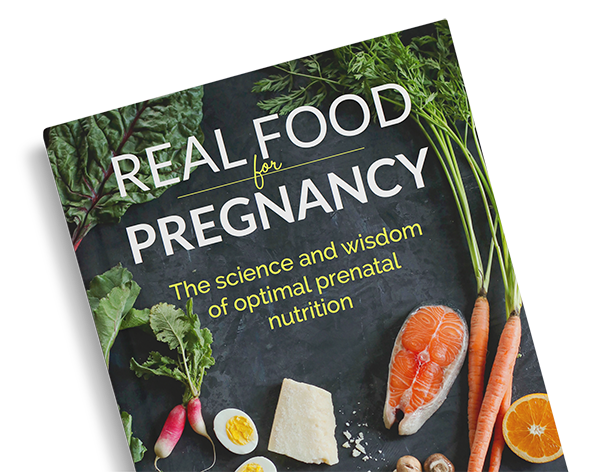

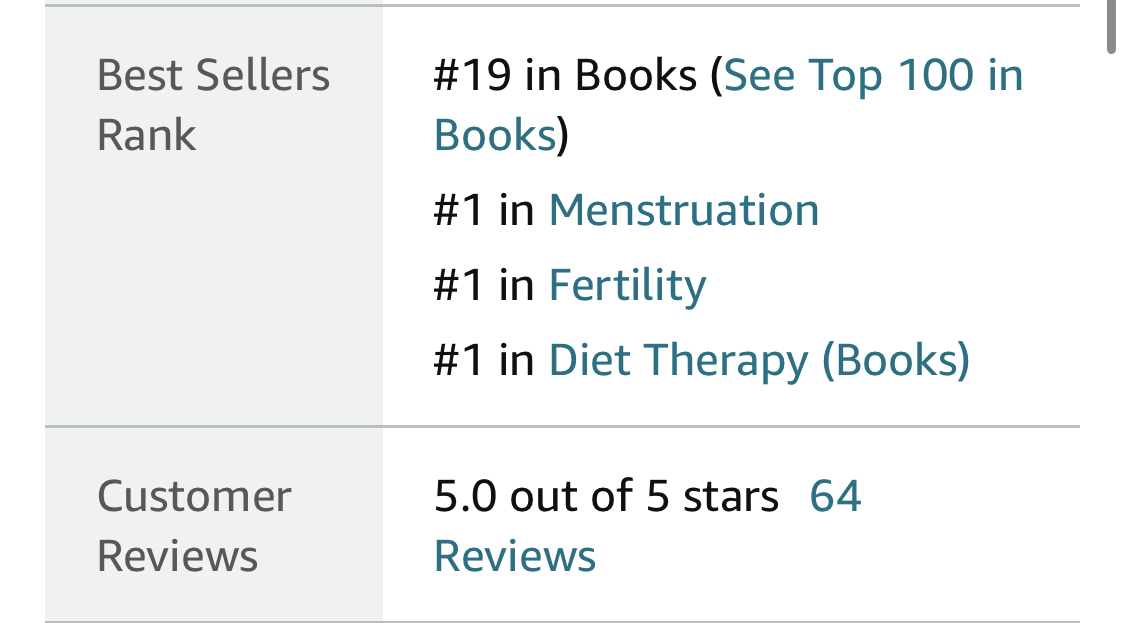
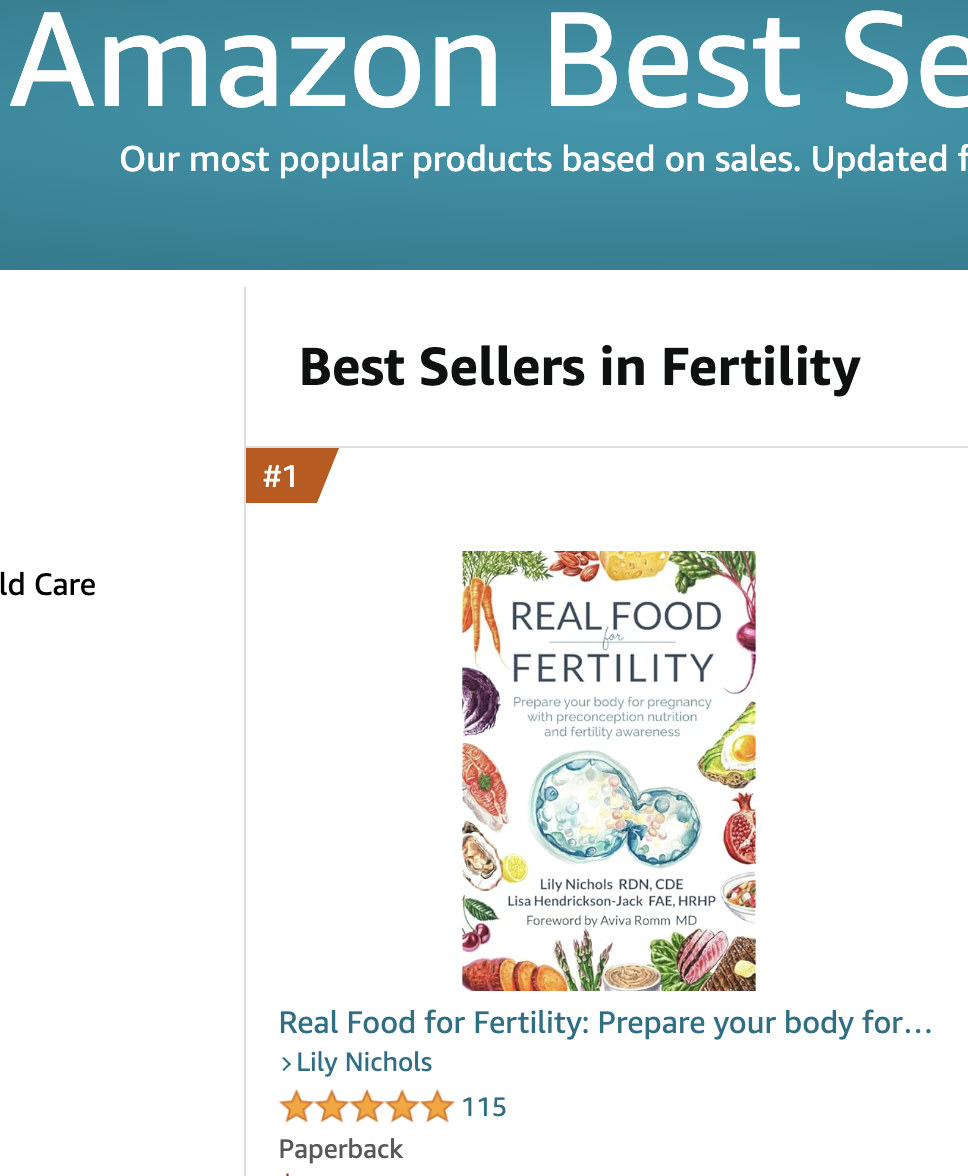
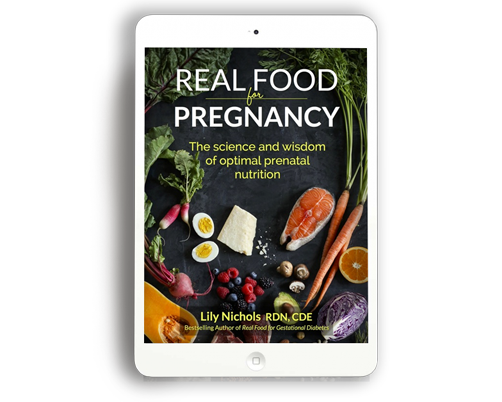
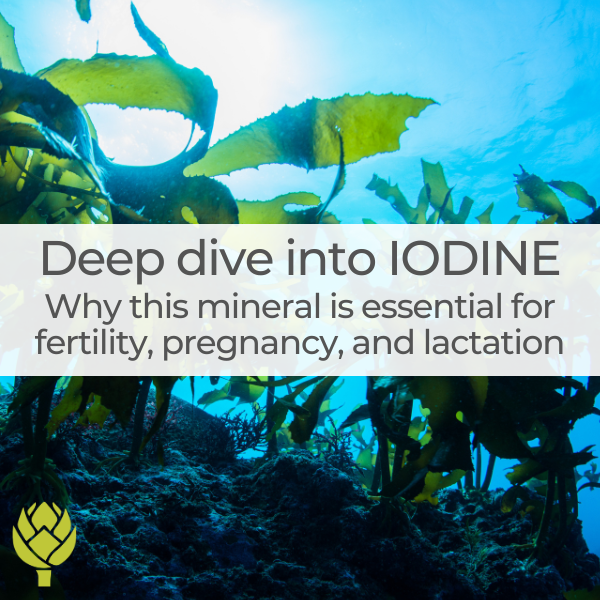
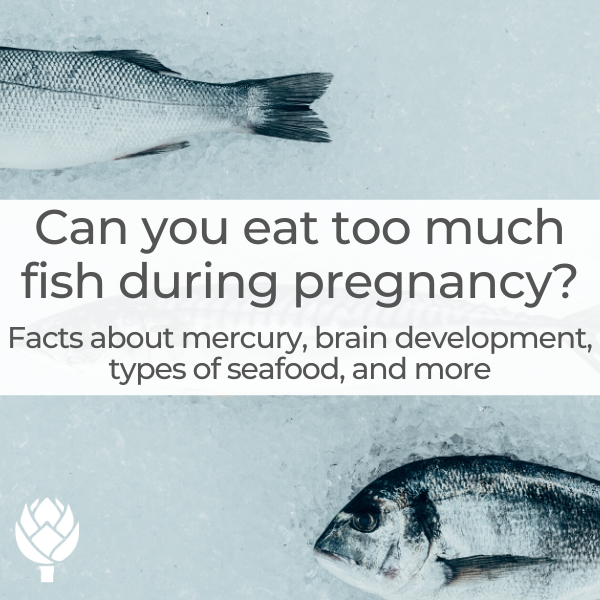
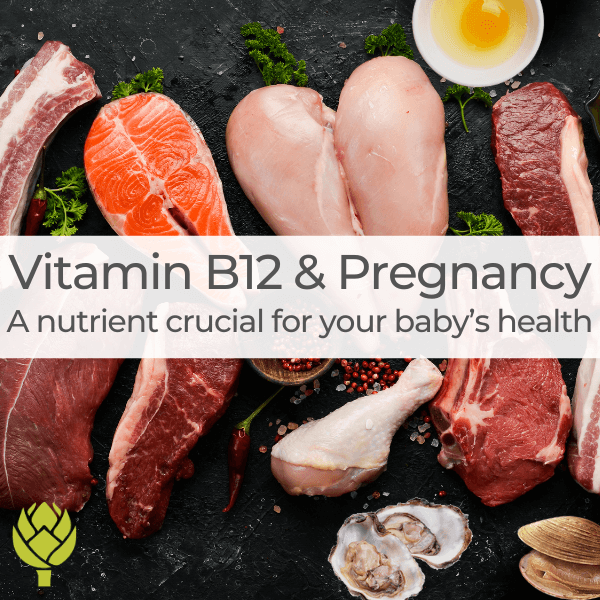
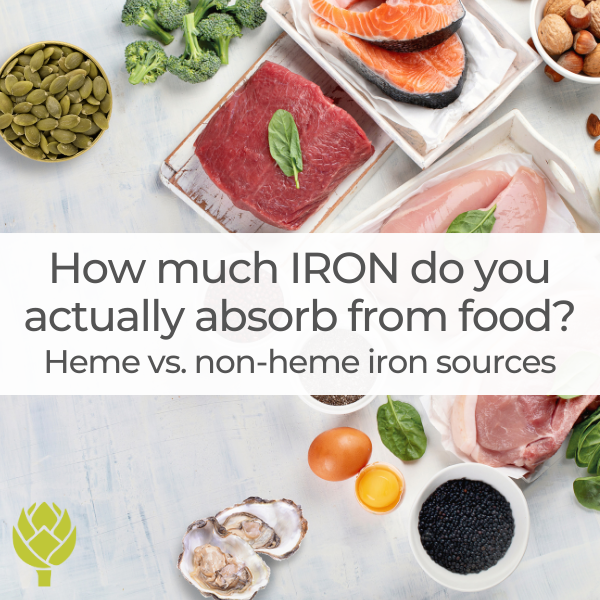

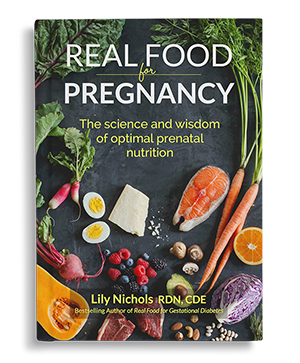
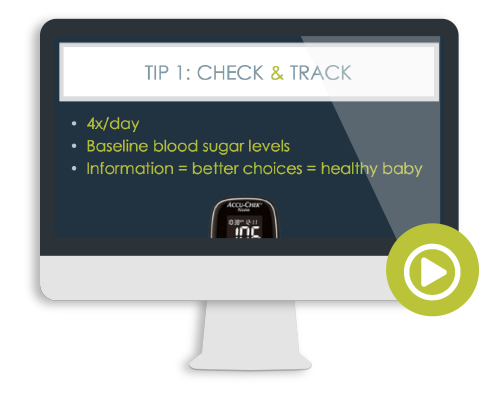
Lily, thank you so much for writing Real Food for Fertility! It’s a great book for anyone wanting to get pregnant or who has suffered fertility challenges! It does an excellent job of explaining the importance of nutrition for preparing for pregnancy! Of course not all fertility issues are preventable (and you make that clear in the book), but the info about diet and supplements to boost fertility and ease the journey is nonetheless extremely comprehensive.
Appreciate the feedback, Caroline. 🙂
I thoroughly enjoyed reading Real Food for Fertility and completed it within just two days. Everything is presented so clearly, making it easy to grasp, even though there is a TON of data covered.
You and Lisa clearly put a lot of thought and effort into the book. As someone personally dealing with PCOS, I found that chapter particularly insightful as my husband and I gear up to conceive. I feel so much more hope now.
Also, the meal plans and recipes are a fantastic addition, and I’ve already sampled some of them – they’re absolutely delicious. I wholeheartedly recommend this book to others!
So happy to hear you enjoyed it, Larissa!